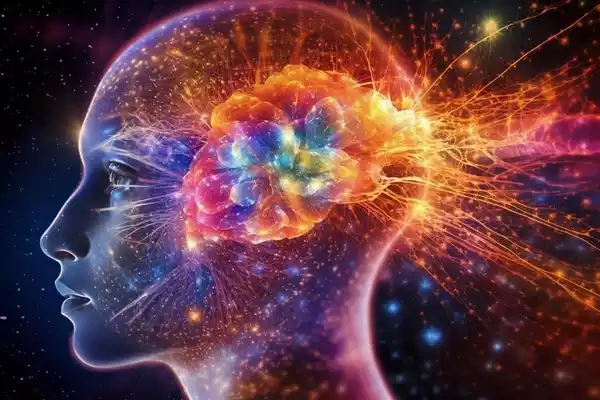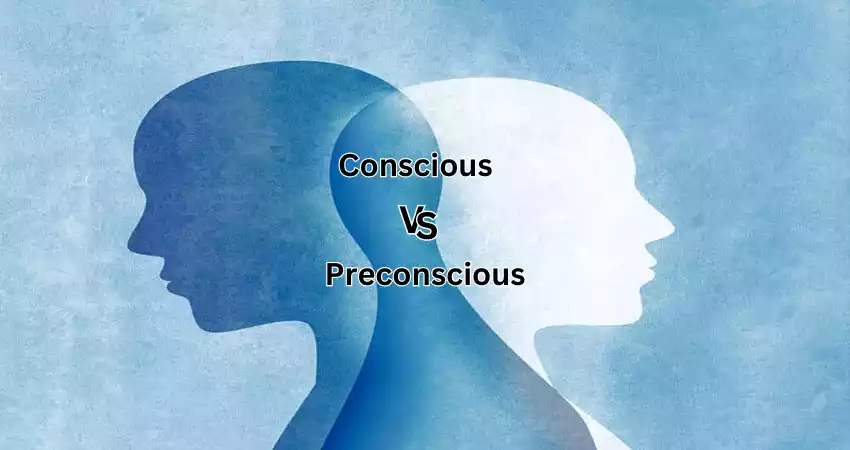Consciousness and preconsciousness are fascinating concepts in psychology that help us understand how our mind works. Consciousness is like being in the driver’s seat of our thoughts and experiences, where we are fully aware and in control of what we think and feel.
On the other hand, the preconscious is like a backroom in our minds, storing information that we can bring into our conscious awareness when needed. Together, these two aspects play a crucial role in shaping our daily experiences, decision-making, and how we interact with the world around us.
What is Conscious?
Consciousness is like being the captain of your ship. It’s all about being awake and aware of what’s happening around you and inside your mind. Imagine your brain is a big control center, and when you’re conscious, you’re in charge of the controls.

You can think, feel, remember things, make decisions, and notice the world through your senses like seeing, hearing, and touching. It’s like the lights are on in your brain, and you’re home to experience everything that’s going on, both the big stuff and the tiny details. Being conscious is what lets you enjoy a sunny day, solve a tricky puzzle, or remember a fun time with friends.
What is Preconscious?
The preconscious is like a storage room in your mind, holding information that you’re not actively thinking about right now, but can easily access when you need it. It’s different from being fully aware (conscious) or completely unaware (unconscious). Imagine you have a bunch of files in a cabinet.
These files are your memories, learned skills, and knowledge you’ve gained over time. They’re not in your immediate thoughts, but if someone asks you a question, like your address or how to ride a bike, you can quickly pull out these “files” and use them. The preconscious is super handy because it lets you store all sorts of useful stuff without cluttering your current thoughts, ready to be retrieved whenever you need them.
Importance of Conscious and Preconscious
Understanding the difference between consciousness and preconsciousness is like knowing the difference between what’s on your desk and what’s in your drawers. Your desk (consciousness) has things you’re actively working on and paying attention to, like a project or a conversation.
The drawers (preconsciousness) hold important stuff you’re not using right now, but you can easily open and grab what you need, like an old photo or a calculator. Knowing this difference helps us understand how our mind organizes thoughts and memories.
It’s like having a mental map, helping us navigate our thoughts more efficiently and making sense of how we remember things, react to situations, and solve problems. It’s pretty cool because it shows us there’s a lot more going on in our minds than just what we’re thinking about at the moment!
Comparison Table: Conscious vs Preconscious
Creating a comparison table for Consciousness and Preconsciousness will help illustrate their differences clearly.
| Aspect | Consciousness | Preconsciousness |
|---|---|---|
| Definition | The state of being aware of and able to think about one’s existence, sensations, thoughts, surroundings, etc. | Part of the mind contains information that is not in the forefront but can be easily brought into consciousness. |
| Awareness Level | High; involves active awareness and attention. | Lower; information is not in active awareness but is accessible. |
| Types of Information | Current thoughts, sensory perceptions, and immediate feelings. | Memories, learned skills, and knowledge that are not currently being thought about. |
| Accessibility | Immediate and direct. | Requires a trigger or a reminder to bring information to consciousness. |
| Role in Daily Life | Enables active interaction with the environment and decision-making. | Provides a reservoir of information and experiences that can be drawn upon as needed. |
| Examples | Deciding what to eat, noticing a beautiful sunset, and feeling pain. | Remembering a friend’s phone number, recalling how to drive a car. |
| Influence on Behavior | Direct and immediate. | Indirect, often influences behavior and thoughts without immediate awareness. |
This table highlights the key differences between consciousness and preconsciousness, providing a clear and concise comparison of these two mental states.
Freud’s Theory of Mind
Freud used the metaphor of an iceberg to describe his theory of mind. An iceberg stands as a representation of human awareness – only seeing what’s visible at first glance but unaware of deeper levels beneath.
- Freud suggested that an iceberg is representative of human thought; its hidden depths represent our subconscious minds while its visible tip represents conscious ones.
- Unconscious thought processes are complex and mysterious – no one knows just how much is lurking there.
- Pre-conscious is another area, comprising that portion of an iceberg that lies mostly submerged underwater yet remains visible on top. It is commonly known as “pre-conscious.”
- Relationship The conscious and preconscious minds are interlinked in many ways. A person’s conscious mind encompasses all that can be experienced directly.
- Preconscious information refers to what a person knows but doesn’t use regularly; when needed, their preconscious can push this information out into their conscious minds for use.
- An example of a password would be for a website. It would be strange for someone to think constantly about their favorite website’s password while going about their daily business.
- As people visit various websites, their conscious minds access and retrieve information stored within their subconscious.
- The conscious mind, while limited in capacity and more focused on short-term issues, contains almost unlimited memory storage and information that can be accessed as necessary.
- Preconscious information will usually surface into conscious memories when one makes an effortful attempt to recall it.
- The preconscious acts as a filter between our conscious mind and relevant data; it ensures our thoughts remain logical and coherent.
Real-Life Applications and Implications<
Understanding consciousness and preconsciousness is useful in everyday life. Think of it like having a superpower to know your mind better. When you know what’s happening in your conscious mind, like when you’re choosing what to eat or solving a math problem, you’re in control and can make better decisions.
Then there’s the preconscious, which is like a secret toolbox. It holds all the stuff you know but aren’t thinking about right now, like your best friend’s birthday or how to ride a bike. When you need this information, it pops up just in time! This understanding is super helpful for things like studying, where you can move information from your preconscious to your conscious mind to remember it better.
It’s also important in therapy, where exploring these areas can help you understand your feelings and behaviors better. So, knowing about these two parts of your mind is like having a map to navigate your thoughts and feelings more easily!
Conclusion
Consciousness is our awareness of ourselves and the world around us, necessitating high awareness, focused attention, and the ability to deliberately control thoughts and actions. Consciousness can also be described as a subjective experience as it provides direct awareness of feelings, thoughts, and perceptions through both awake and altered states of awareness.
Preconsciousness refers to mental functions that exist beneath the threshold for conscious awareness, yet can easily be brought to the fore if brought into focus. A preconscious state is distinguished by limited levels of awareness and attention compared with conscious states; actions performed under its control tend to be involuntary without conscious control. Furthermore, automatic behavior, implicit memory storage, and priming effects are examples of such processes.

